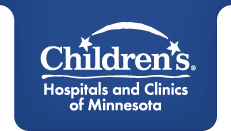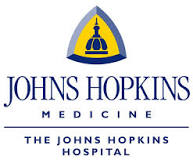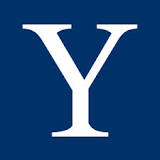A Study Comparing Two Carboplatin Containing Regimens for Children and Young Adults With Previously Untreated Low Grade Glioma
| Status: | Recruiting |
|---|---|
| Conditions: | Brain Cancer |
| Therapuetic Areas: | Oncology |
| Healthy: | No |
| Age Range: | Any - 21 |
| Updated: | 4/17/2018 |
| Start Date: | March 2015 |
| End Date: | April 2021 |
| Contact: | Laura Kane |
| Email: | lakane@luriechildrens.org |
| Phone: | 312.227.4860 |
A Phase III Study Comparing Two Carboplatin Containing Regimens for Children and Young Adults With Previously Untreated Low Grade Glioma
This study is trying to learn and understand if the chemotherapy drug called carboplatin
works as well as the standard therapy. The standard therapy for Low Grade Glioma (LGG) in
children and young adults is using a combination of carboplatin and vincristine. Studies in
children have shown that the use of carboplatin alone has promise of being just as effective
for treating LGG as standard therapy. Additionally, this study will try to understand if
treatment with carboplatin alone is associated with an improved quality of life for LGG
patients and their families.
works as well as the standard therapy. The standard therapy for Low Grade Glioma (LGG) in
children and young adults is using a combination of carboplatin and vincristine. Studies in
children have shown that the use of carboplatin alone has promise of being just as effective
for treating LGG as standard therapy. Additionally, this study will try to understand if
treatment with carboplatin alone is associated with an improved quality of life for LGG
patients and their families.
Low grade gliomas are the most common central nervous system (CNS) tumors in the pediatric
population. They consist of a heterogeneous group of tumors that are classified as World
Health Organization (WHO) grade I or II. This includes astrocytic, oligodendroglial, neuronal
and mixed glial- neuronal tumors. The clinical behavior of these tumors varies according to
location and histology. The cerebellum is the most common location for low grade gliomas, but
they can also arise in the cerebrum, deep midline structures such as the hypothalamus, optic
pathway and, less frequently, in the brainstem.
Although the etiology of most childhood LGG is unknown, patients with Neurofibromatosis type
1 (NF-1) are one rare group predisposed to developing CNS tumors. NF-1 is an inherited
disorder that affects the nervous system, eyes and skin. In addition, children are at an
increased risk for developing optic pathway and hypothalamic low grade gliomas. Fifteen
to-20% of NF-1 patients will develop these tumors, and they account for up to 70% of the
tumors seen in this location. In half of patients with NF-1 and an optic pathway tumor, the
patients are not symptomatic and the mass is found incidentally. Many optic gliomas in NF-1
patients follow an indolent course and stabilize without intervention. Patients are most
commonly treated when there is deterioration in their vision or a symptomatic increase in the
tumor size. Although the event free survival (EFS) has been reported to be similar between
NF1 and non-NF1 patients, overall survival is higher in NF1 patients.
Location, as it affects the extent of surgical resection, plays a key role in the prognosis
of all patients with low grade gliomas. Complete surgical resection offers a 90% survival
rate at 10 years with often no need for adjuvant chemotherapy or radiation. Unfortunately, a
gross total resection is not always possible due to the location of the tumor and its
proximity to vital structures in the brain. In patients with an incomplete resection, the 10
year EFS is up to 74% with radiation treatment. However, toxicity from radiation, especially
in young children, is significant and includes neurocognitive delays, endocrinopathies,
secondary malignancy, ototoxicity and vasculopathy. Therefore, most experts agree that the
standard of care in young children is to treat low grade gliomas that require adjuvant
therapy after surgical resection/biopsy, or whose tumors are not surgically resectable with
chemotherapy first, in order to delay or avoid radiation. This is especially true in children
with NF-1, where the risk of a secondary malignancy after radiation therapy can be as high as
50% in the lifetime of the child.
population. They consist of a heterogeneous group of tumors that are classified as World
Health Organization (WHO) grade I or II. This includes astrocytic, oligodendroglial, neuronal
and mixed glial- neuronal tumors. The clinical behavior of these tumors varies according to
location and histology. The cerebellum is the most common location for low grade gliomas, but
they can also arise in the cerebrum, deep midline structures such as the hypothalamus, optic
pathway and, less frequently, in the brainstem.
Although the etiology of most childhood LGG is unknown, patients with Neurofibromatosis type
1 (NF-1) are one rare group predisposed to developing CNS tumors. NF-1 is an inherited
disorder that affects the nervous system, eyes and skin. In addition, children are at an
increased risk for developing optic pathway and hypothalamic low grade gliomas. Fifteen
to-20% of NF-1 patients will develop these tumors, and they account for up to 70% of the
tumors seen in this location. In half of patients with NF-1 and an optic pathway tumor, the
patients are not symptomatic and the mass is found incidentally. Many optic gliomas in NF-1
patients follow an indolent course and stabilize without intervention. Patients are most
commonly treated when there is deterioration in their vision or a symptomatic increase in the
tumor size. Although the event free survival (EFS) has been reported to be similar between
NF1 and non-NF1 patients, overall survival is higher in NF1 patients.
Location, as it affects the extent of surgical resection, plays a key role in the prognosis
of all patients with low grade gliomas. Complete surgical resection offers a 90% survival
rate at 10 years with often no need for adjuvant chemotherapy or radiation. Unfortunately, a
gross total resection is not always possible due to the location of the tumor and its
proximity to vital structures in the brain. In patients with an incomplete resection, the 10
year EFS is up to 74% with radiation treatment. However, toxicity from radiation, especially
in young children, is significant and includes neurocognitive delays, endocrinopathies,
secondary malignancy, ototoxicity and vasculopathy. Therefore, most experts agree that the
standard of care in young children is to treat low grade gliomas that require adjuvant
therapy after surgical resection/biopsy, or whose tumors are not surgically resectable with
chemotherapy first, in order to delay or avoid radiation. This is especially true in children
with NF-1, where the risk of a secondary malignancy after radiation therapy can be as high as
50% in the lifetime of the child.
Inclusion Criteria:
- Tumor Diagnosis: Low grade gliomas
- Patients must be less than 21 years of age at study entry.
- Central nervous system tumor. Patients with primary spinal cord lesions. Patients with
metastatic disease are also allowed.
- No previous therapy for the tumor with the exception of corticosteroids and surgery.
- Performance status:Karnofsky Performance Scale (KPS for > 16 yrs of age) or Lansky
Performance Score (LPS for ≤ 16 years of age) ≥ 50 assessed within two weeks prior to
registration
- Seizure disorder should be well controlled.
- Normal organ and marrow function
- Female patients of childbearing potential must not be pregnant or breast-feeding.
Female patients who have menstruated and are of childbearing potential must have a
negative serum or urine pregnancy test prior to enrollment.
- Patients of childbearing or child fathering potential must be willing to use a
medically acceptable form of birth control, which includes abstinence, while being
treated on this study and for 6 months after the last drug administration.
- Ability of subject or parent/guardian to understand and the willingness to sign a
written informed consent/assent document. Informed consent/assent must be signed prior
to registration on this study.
- Tissue blocks or slides must be sent. If tissue is unavailable, the study chair must
be notified prior to enrollment.
Exclusion Criteria:
- Patients who are receiving any other investigational or chemotherapeutic agents will
be excluded.
- Patients with known inability to return for follow-up visits or obtain follow-up
studies required to assess for toxicity to therapy.
- Patients with Subepenydmal Giant Cell Astrocytomas are excluded. Patients with
intrinsic brainstem tumors of the pons will be excluded from the study.
- History of hypersensitivity reactions attributed to compounds of similar chemical or
biologic composition to platinum based chemotherapy.
- Patients with uncontrolled inter-current illness are excluded.
- Females who are pregnant or breast feeding are excluded.
We found this trial at
10
sites
Dana-Farber Cancer Institute Since it’s founding in 1947, Dana-Farber has been committed to providing adults...
Click here to add this to my saved trials
Nationwide Children's Hospital At Nationwide Children’s, we are creating the future of pediatric health care....
Click here to add this to my saved trials
Johns Hopkins Hospital Patients are the focus of everything we do at The Johns Hopkins...
Click here to add this to my saved trials
Click here to add this to my saved trials
Click here to add this to my saved trials
Click here to add this to my saved trials
2525 Chicago Ave
Minneapolis, Minnesota 55404
Minneapolis, Minnesota 55404
(612) 813-6000

Children's Hospitals and Clinics of Minnesota - Minneapolis Children's Hospitals and Clinics of Minnesota is...
Click here to add this to my saved trials
Yale University Yale's roots can be traced back to the 1640s, when colonial clergymen led...
Click here to add this to my saved trials
Phoenix Children's Hospital Phoenix Children's Hospital has provided hope, healing, and the best healthcare for...
Click here to add this to my saved trials
Click here to add this to my saved trials




